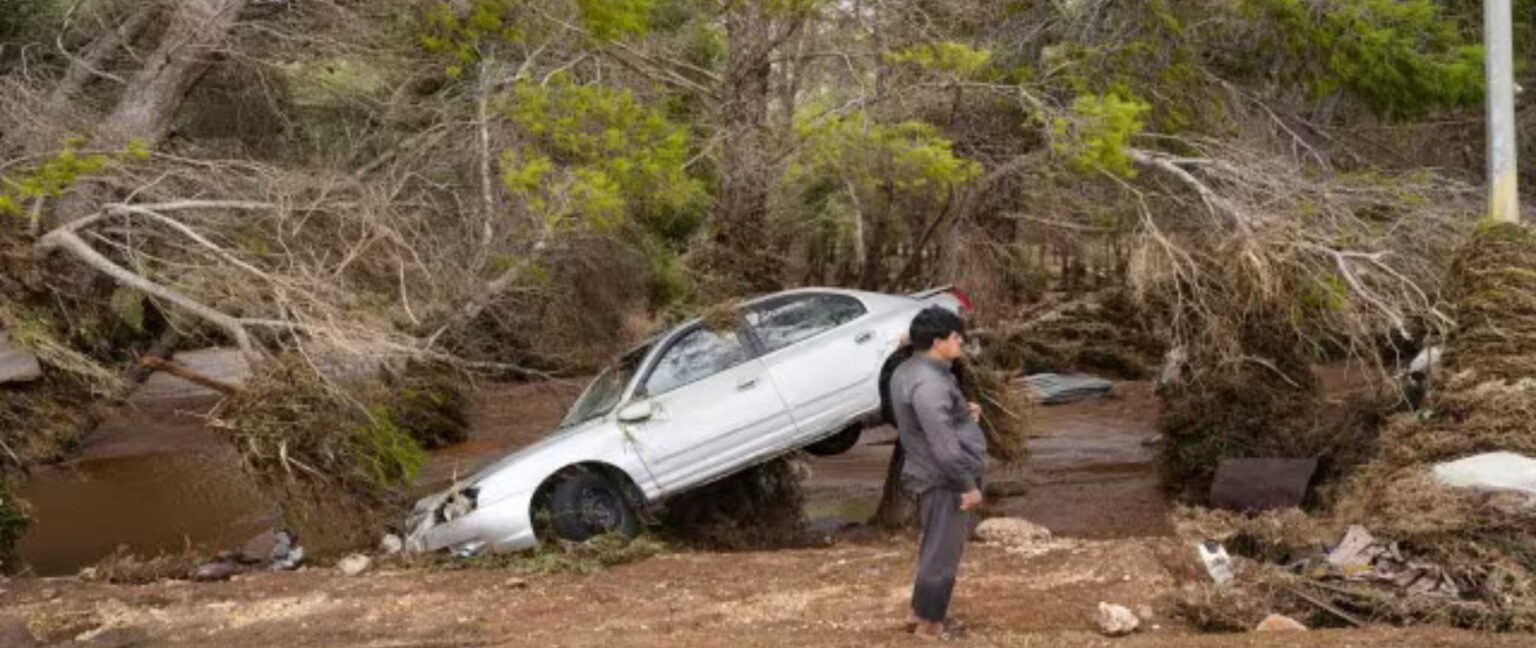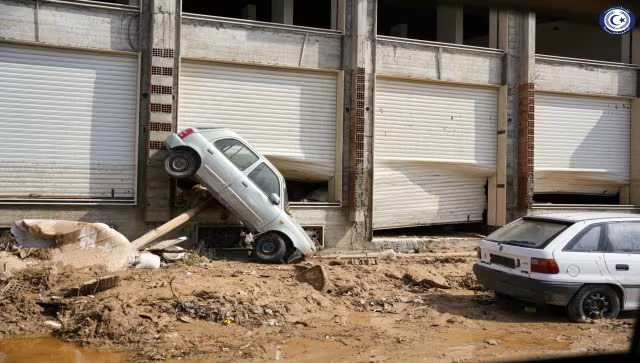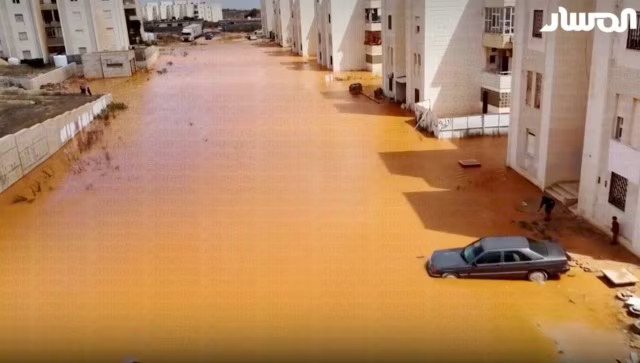The country’s greatest deadly environmental disaster in modern times was the floods.
The destruction brought on by Mediterranean storm Daniel in Libya has resulted in over 5,200 fatalities and over 10,000 persons still missing, according to The Associated Press.
Derna, a city in eastern Libya, has been hardest hit; up to 25% of it has been entirely destroyed, according to officials.
Let’s look more closely.
Floods in Libya
Tuesday’s floods in Derna, Libya, is depicted in this satellite image from Planet Labs PBC. Image source: AP
Videos of the aftermath, according to the Associated Press, show water pouring through the port city’s remaining tower blocks, automobiles flipping over, and later, bodies lining up on sidewalks draped in blankets, ready to be buried. There was no warning system or evacuation plan, according to the locals, and the only sign of danger was the deafening sound of the dams breaking.
In a number of eastern Libyan communities, including Al-Marj Tobruk, Takenis, Al-Bayada, Battah, and all the way along the eastern coast to Benghazi, there has been significant destruction, especially to buildings and dams.
In this image from the Libyan government, a car in Derna, Libya, is hanging on a storefront after being swept away by floodwaters. Image source: AP
Osama Aly, the chairman of Libya’s Emergency and Ambulance Authority, told CNN that strong muddy currents carrying cars and debris entirely demolished homes in valleys. He stated that there are also no phone lines in the city.
Reason for the devastation
According to CNN, an extremely intense low-pressure system that entered the Mediterranean before building into a tropical storm called a medicane is to blame for this week’s terrible floods in Greece. This medicane is what caused the rain to sweep across several cities in northeastern Libya.
It is noteworthy that the devastating storm strikes in a year that has seen a record number of climate disasters and extreme weather events, including destructive wildfires and unheard-of heat.
Scientists believe that the storm’s heavy rainfall was caused in part by the Mediterranean Sea’s much higher-than-normal temperature, which is due to pollution that causes global warming and is also responsible for the oceans’ worldwide rise in temperature.
Lack of government system
Image source: AP
Analysts assert that the infrastructure of Derna, particularly the broken dams, was already in a deplorable state and that this contributed to the destruction caused by the storm.
Its infrastructure is in shambles and was vulnerable to heavy rainfall as a result of years of protracted conflict and the lack of a central administration. The only country left, according to the United Nations, without a national climate plan is Libya.
Since Moammar Gaddafi’s despotic rule was overthrown in 2011 by the NATO-backed Arab Spring uprising, North Africa has been divided into rival states and beset by militancy.
Prime Minister Abdul Hamid Dbeibah is in charge of Libya’s globally acclaimed administration, which is based in Tripoli. According to the AP, the eastern administration in Benghazi is led by the opposing prime minister, Ossama Hamad, and is supported by strong military commander Khalifa Hiftar.
Although both governments and the eastern commander have independently vowed to support the rescue operations in the flood-affected areas, there is no history of productive coordination between them.
Rival parliaments have resisted coming together for years, despite repeated calls from the international community and planned elections that were never held in 2021.
A story about a run-down city
Derna was built in large part during Libya’s Italian occupation in the first half of the 20th century. It rose to fame because of the picturesque white coastal homes and palm gardens.
Similar to other cities in the country’s east, it has not received a lot of investment or reconstruction since the revolution. The majority of its current infrastructure was developed under Gaddafi, including the now-demolished Wadi Derna dam, which was built by a Yugoslav company in the middle of the 1970s.
Jalel Harchaoui, an associate fellow with a focus on Libya at the Royal United Services Institute for Defence and Security Studies in London, claims that Hiftar harbors misgivings about the city and its inhabitants and has been hesitant to grant them too much autonomy. For instance, strangers from Benghazi and other places, rather than Derna locals, were in charge of the city’s extensive restoration plan last year.
Image source: AP
Foreign assistance
Despite the political separation between the East and West, the Tripoli government, which is not in charge of the eastern provinces, has given assistance to Derna. According to India Today, a relief flight to the afflicted area took off on Tuesday from Misrata, a city in western Libya.
The UAE, Egypt, and Turkey are providing support for national rescue efforts. However, as of Tuesday, rescue teams were having problems reaching Derna.
The problem, according to Claudia Gazzini, a senior Libya analyst at International Crisis Group, is partially logistical because many of the highways leading into the port city were damaged by the storm.

















